How to sell merch online & maximize profits

If you’ve ever considered selling your merch online, Sellfy is the ideal platform to get started. With Sellfy, you can set up your store quickly and effortlessly, enjoying features such as no payout threshold, advanced store customization, built-in email marketing, upselling options, and a large catalog of high-quality products.
The global merch market is booming, with more people seeking unique, personalized items online. This is your chance to tap into that demand.
By leveraging the internet, you can maximize sales and reach customers worldwide. So, let’s explore how to sell merch online—your future customers are just a click away!
Defining your brand & merchandise offering
Your brand is everything—it’s the very essence that sets you apart and makes your store unique. Crafting a strong, clear brand identity is super important because it helps you connect with your target audience.
Once you’ve nailed down what your brand stands for, it becomes so much easier to pick out the right type of merch that not only represents your brand but also excites your customers.
Clear branding for online merch stores
A clear and consistent brand identity is crucial for building trust and recognition. This includes your logo, color scheme, typography, and tone of voice.
All these elements should work together to create a cohesive brand image that reflects your values and appeals to your target market. Your branding should be visible in every aspect of your online store—from your website design to your product packaging.
Deciding what type of merch to sell
Choosing the right type of merch is key to your success. Consider what products align with your niche and what your audience will find appealing.
Popular options include apparel like t-shirts and hoodies, accessories such as bags and phone cases, and unique items like custom artwork or home decor.
Your choice should be guided by market research and an understanding of your target audience’s preferences and needs.
Sellfy has enabled many creators to successfully sell their merchandise online. Here are some real-life examples:
The Wyrd Store, a popular creative shop, uses Sellfy to sell eco clothing and accessories featuring their signature mystical designs. Their merchandise has become a hit with their fans, showcasing how Sellfy can seamlessly integrate with a creator’s brand.
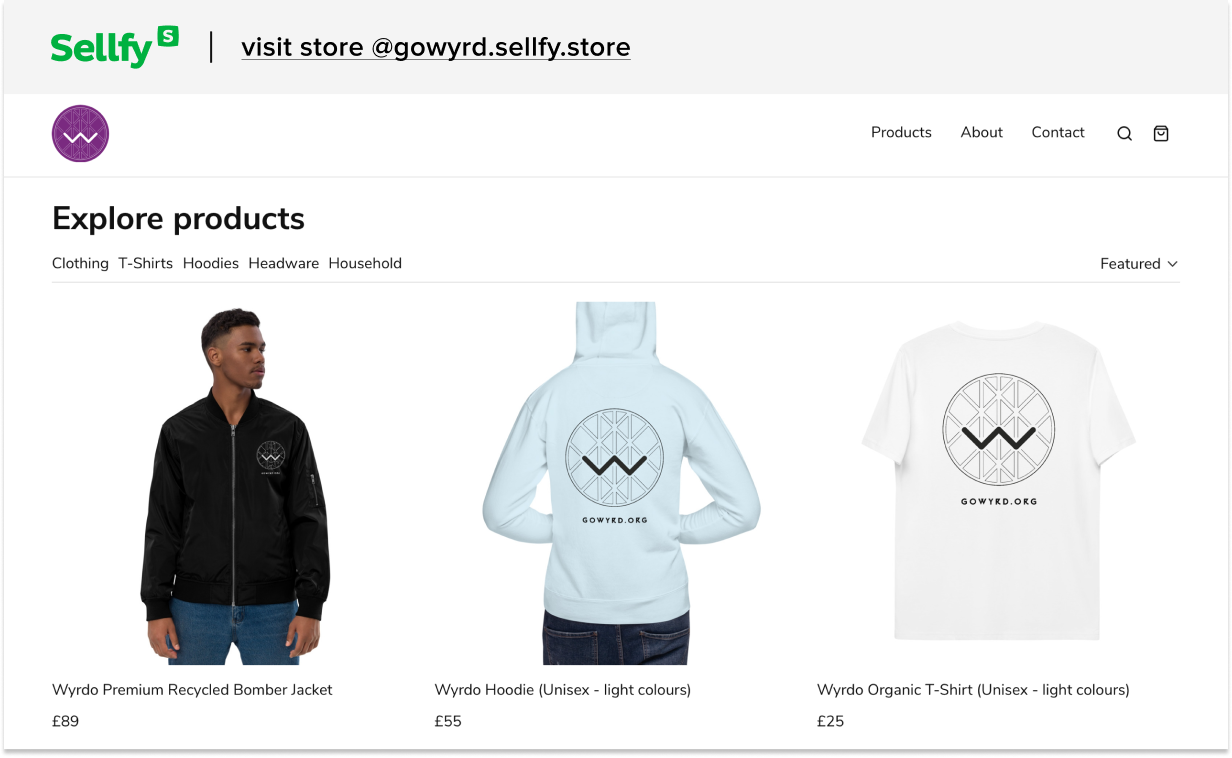
High Life Samples, a music production company, has leveraged Sellfy to sell branded merch such as t-shirts, hoodies, and accessories. Their high-quality merch, featuring unique designs related to music production, has resonated with their audience, turning their expertise into a thriving business through their online shop.
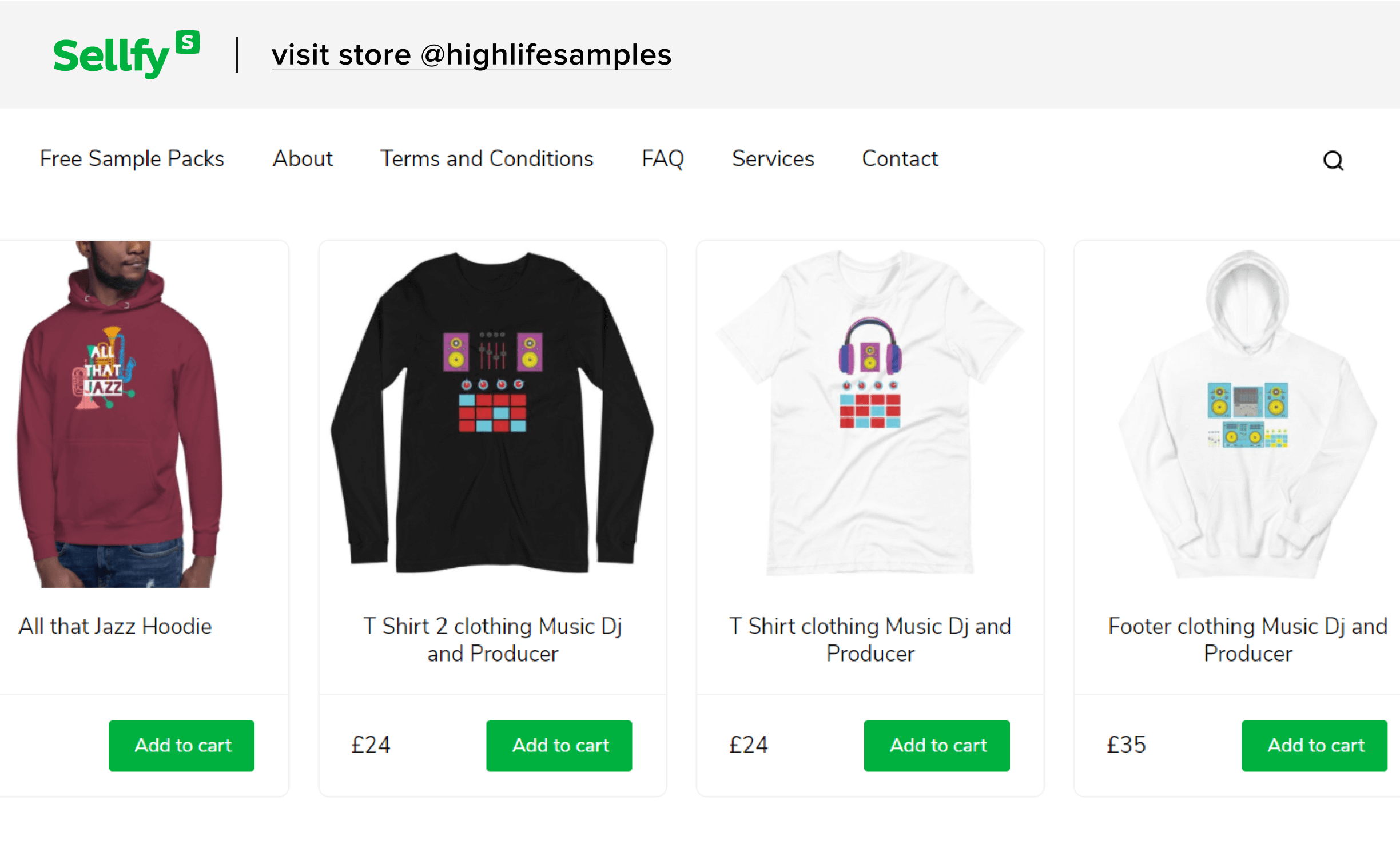
Choosing the right platform to sell your merch
Selecting the right platform is a critical step in setting up your online merch business. The platform you choose will affect your reach, control over branding, and overall profitability.
Pros & cons of marketplace platforms vs. personal websites
Marketplace platforms like Amazon, Etsy, Walmart, TikTok Shop, and eBay provide a ready-made audience and robust infrastructure for selling products.
They handle many logistical aspects, such as payment processing and shipping, which can save you time and effort. However, they often charge fees and offer limited control over branding and customer experience.
On the other hand, personal websites give you complete control over your brand and customer interactions. While it requires more effort to attract traffic, the potential for higher profit margins and stronger brand loyalty is greater.
Print-on-demand (POD) and ecommerce platforms like Sellfy allow you to build and customize your own online store with ease, providing the best of both worlds. POD platforms allow you to sell custom products without holding inventory.
Comparing marketplace platforms:
- Amazon: offers a vast customer base but high competition and fees.
- Etsy: ideal for handmade and unique items, but caters to a niche market.
- Walmart: provides a large audience but has strict seller requirements.
- TikTok Shop: engages younger demographics, but heavily depends on social media trends.
- eBay: has a wide reach, but is often associated with used goods.
Short comparison of popular print-on-demand (POD) platforms:
- Sellfy: easy to use, integrates with various e-commerce tools, and offers a range of customizable products.
- Printify: known for its wide range of products and scalability.
- Printful: renowned for high-quality printing and reliability.
- Gelato: offers a global network and fast shipping, making it suitable for international sales.
Setting up your online merch store
Setting up your online merch store involves several key steps. With Sellfy, the process is straightforward so that you can focus on creating and marketing your products.
Step-by-step guide to setting up an online store with Sellfy:
- Sign up & choose a plan. Create an account on Sellfy and select a pricing plan that fits your needs.
- Customize your store. Use Sellfy’s tools to design your store’s layout and upload your logo, or choose a store theme.
- Add merch products & set prices. Upload your designs, select the POD products you want to sell, and determine the pricing for each item.
- Configure payments. Set up payment gateways to accept online payments.
- Launch. Publish your store and start promoting it!
And, last but not least, organize your products into clear categories to make it easy for customers to find what they’re looking for. Use descriptive labels and create a logical navigation structure. For example, categorize apparel by type (e.g., t-shirts, hoodies) and accessories by use (e.g., bags, phone cases).
You should also ensure that your store has essential features such as a secure checkout process, mobile-friendly design, and clear return policies. These elements enhance the shopping experience and build trust with your customers.
A responsive design ensures your store looks great on any device, while a secure checkout process reassures customers that their payment information is safe.
Creating high-quality product listings
High-quality product listings are crucial for attracting and converting customers. This involves professional product photography, compelling product descriptions, and incorporating SEO best practices.
Importance of professional product photography
High-quality product photos are essential for online sales. They are often the first impression customers have of your products.
So, it’s important to use professional photography or invest in good lighting and equipment to showcase your merch in the best possible light.
High-resolution images with various angles and close-ups can help customers understand the product better and increase their confidence in making a purchase.
Writing compelling product descriptions
Craft detailed and engaging product descriptions that highlight the features and benefits of each item. Use a tone that matches your brand and appeals to your target audience.
Include size guides, material information, and care instructions. A well-written description can make a significant difference in converting visitors into customers.
Incorporating SEO best practices
Optimize your product listings on Sellfy with relevant keywords to improve their visibility in search engine results. Use descriptive titles, meta descriptions, and tags. This will help attract organic traffic to your store.
For example, if you’re selling a custom t-shirt, include keywords like “custom t-shirt,” “personalized t-shirt,” and “unique t-shirt design” in your product title and description.
Localization strategies
Consider localizing your store for different markets. This includes translating product descriptions, adjusting pricing for local currencies, and offering regional shipping options. Localization can significantly enhance your store’s appeal to international customers and increase your global reach.
Pricing strategies for online merchandise
Setting the right price for your merch is important for attracting customers and maintaining profitability. Understanding market pricing, using psychological pricing tactics, and offering promotional pricing strategies can help boost your sales.
First, research your competitors to understand the market pricing for similar products. Position your pricing competitively while ensuring you maintain healthy profit margins. Consider factors such as production costs, perceived value, and customer willingness to pay.
Also, remember to use psychological pricing strategies to encourage purchases. For example, pricing an item at $19.99 instead of $20 can make it seem more affordable. Offering bundles or discounts for bulk purchases can also boost sales.
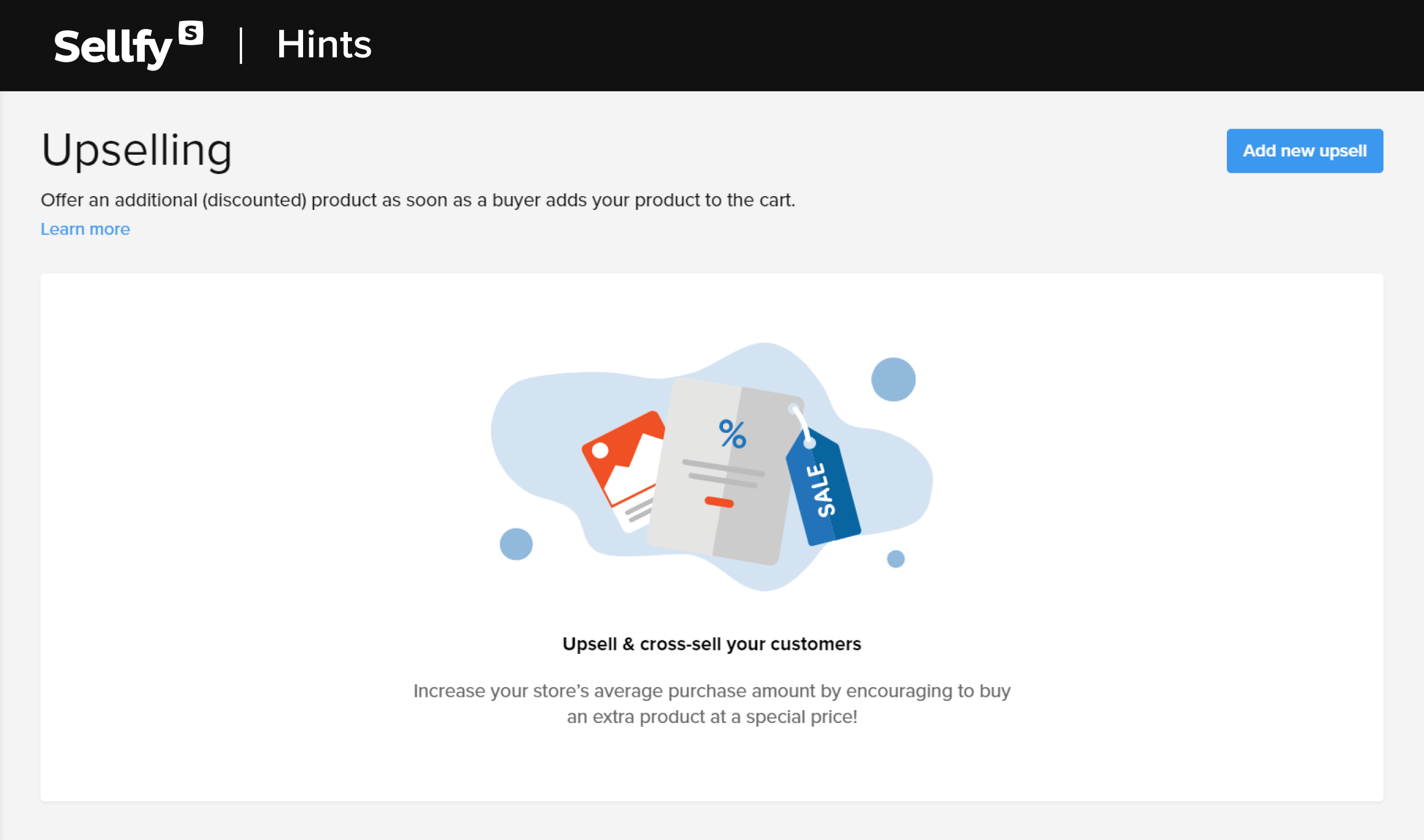
Another tactic is to use anchor pricing, where you display a higher original price next to a discounted price to highlight the deal.
And, finally, run promotional campaigns to attract customers. Offer discounts, flash sales, and special deals (Sellfy’s marketing tools can help you manage these promotions effectively).
For example, you can create discount codes, set up limited-time offers, and promote these deals through email marketing and social media.
Marketing your merch online with Sellfy
Marketing is essential for driving traffic to your online store and converting visitors into customers. Sellfy provides various tools to help you promote your products and engage with your audience.
Utilizing social media
Leverage social media platforms to promote your merch and engage with your audience. Share product photos, behind-the-scenes content, and customer testimonials. Platforms like Instagram, Facebook, and TikTok are particularly effective for visual marketing.
Use hashtags, collaborate with influencers, and run social media ads to reach a broader audience.
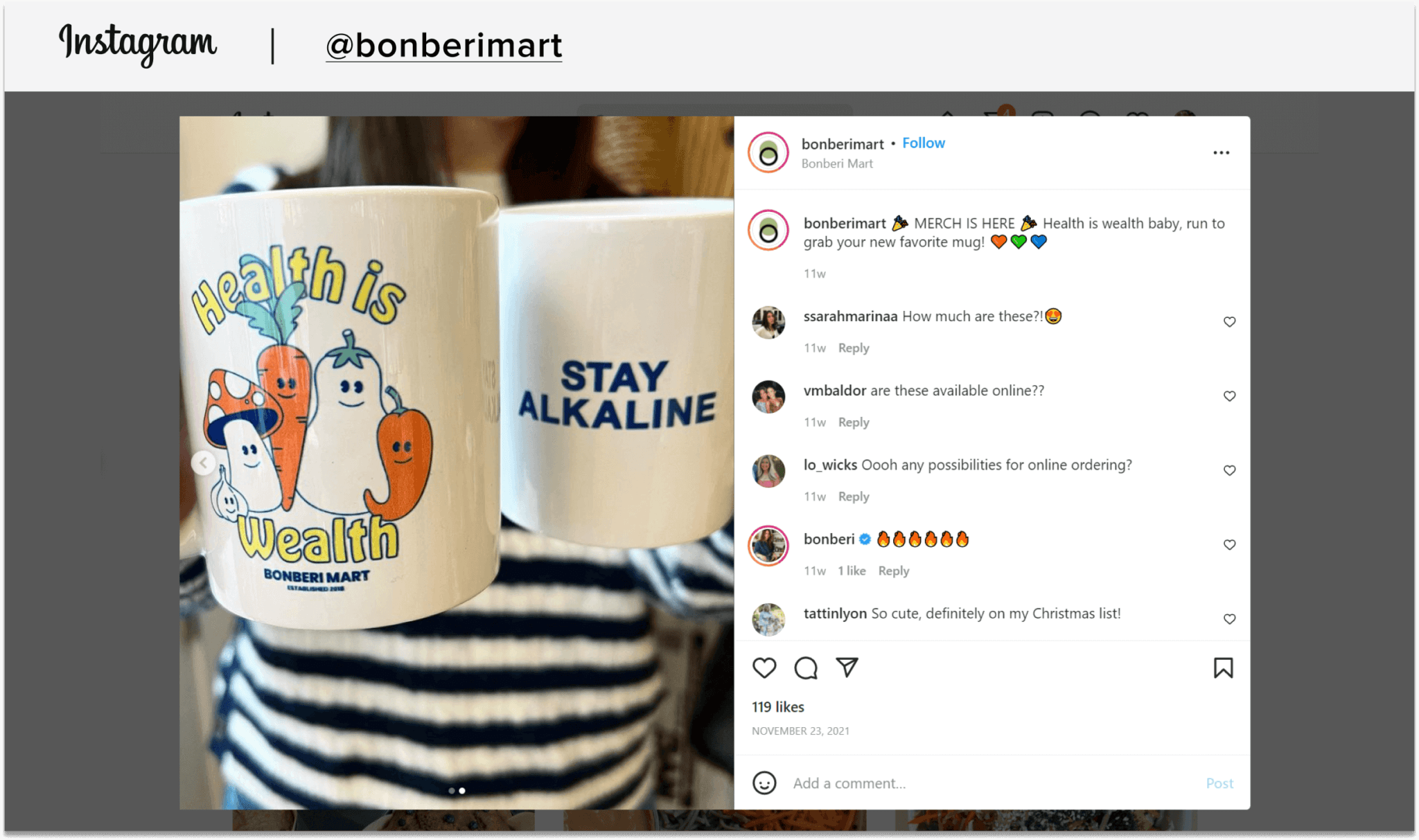
Email marketing strategies
Build an email list and use it to send newsletters, product updates, and promotional offers. Personalized emails can help retain customers and drive conversions.
Use email marketing tools to segment your audience and send targeted campaigns based on their preferences and behaviors.
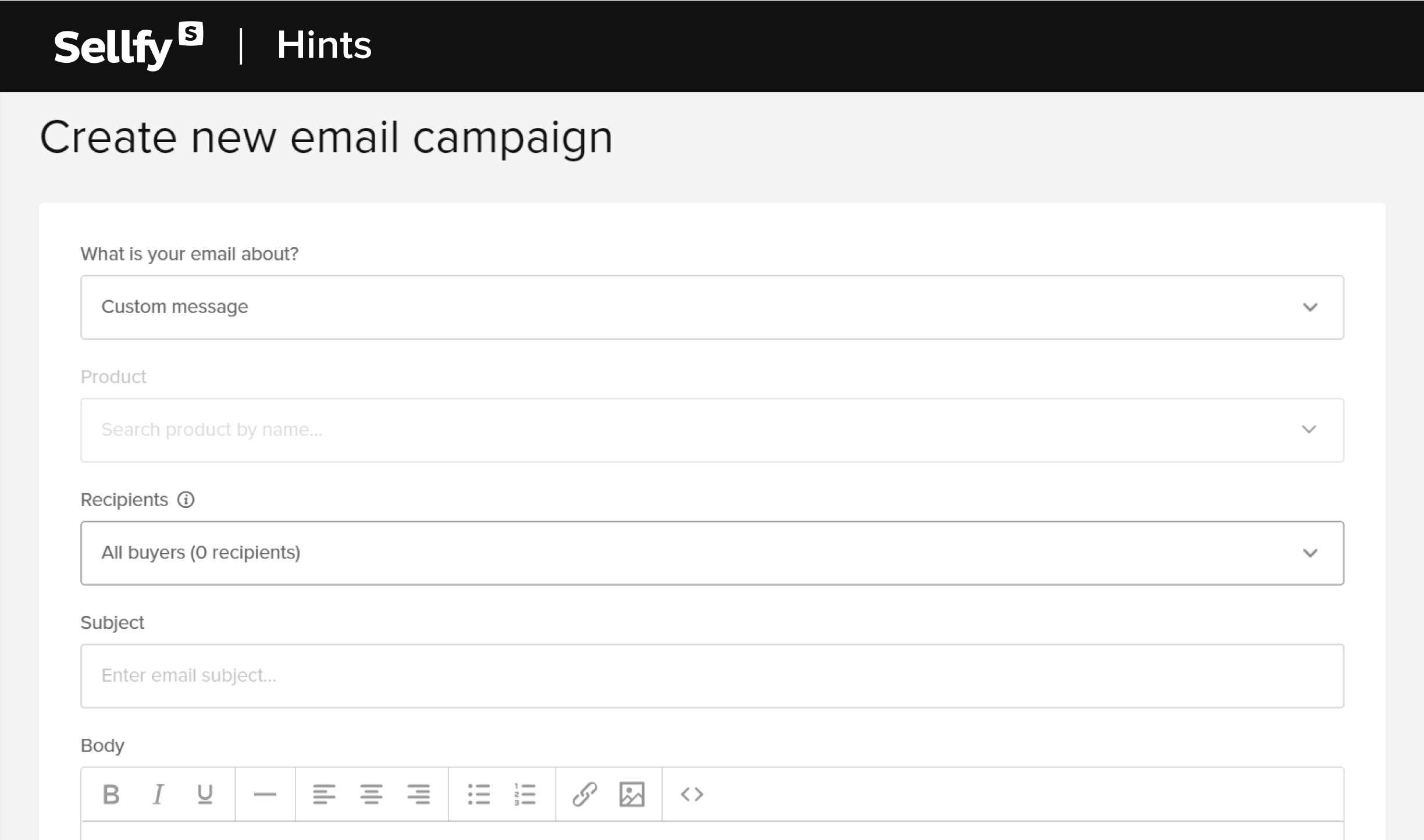
Influencer & affiliate marketing
Collaborate with influencers and affiliate marketers to expand your reach. They can promote your products to their followers, providing social proof and driving sales.
Choose influencers whose audience aligns with your target market and offer them incentives such as commission or free products.
Exploring retargeting ads & programmatic advertising
Use retargeting ads to reach potential customers who have visited your store but didn’t make a purchase. Programmatic advertising can help you target specific demographics and optimize your ad spend.
By using data-driven strategies, you can deliver personalized ads to the right audience at the right time.
Content marketing specific to merchandise
Create valuable content related to your products to attract and engage your audience. Blog posts, how-to videos, and user-generated content can drive traffic to your store and improve your SEO.
For example, if you’re selling fitness apparel, you could create workout tutorials or fitness tips to attract fitness enthusiasts.
Managing inventory & fulfillment
Effective inventory management and fulfillment are crucial for maintaining customer satisfaction and operational efficiency. Choose the right fulfillment method and ensure smooth handling of shipping, returns, and customer service.
Options for fulfillment:
- Self-fulfillment. You handle all aspects of storage, packing, and shipping. This gives you full control but can be time-consuming.
- Dropshipping. A third-party supplier handles storage and shipping. This reduces your workload and upfront costs but can limit your control over fulfillment quality.
- Third-party logistics (3PL). Outsource fulfillment to a specialized company. This can streamline operations and scale with your business but may come with higher costs.
Handling shipping, returns & customer service
Offer multiple shipping options to cater to different customer preferences. Provide clear information about shipping times and costs. Implement a straightforward return policy and handle returns efficiently to maintain customer trust.
Invest in customer service to address inquiries and resolve issues promptly. Happy customers are more likely to return and recommend your store to others.
Leveraging analytics to boost sales
Leveraging analytics is essential for optimizing your online store’s performance. By tracking key metrics and adapting your strategy based on data, you can boost sales and improve customer satisfaction.
Data provides insights into customer behavior, sales trends, and marketing effectiveness. Analyzing this data helps you make informed decisions and identify areas for improvement. For example, tracking which products are most popular can guide your inventory and marketing strategies.
Use analytics tools like Google Analytics and Sellfy’s built-in analytics to monitor key metrics such as traffic sources, conversion rates, average order value, and customer demographics. Tracking these metrics helps you understand what’s working and what needs adjustment.
Use customer behavior and sales data to refine your marketing and sales strategies. For example, if you notice a high cart abandonment rate, consider improving your checkout process or offering incentives like free shipping. Regularly review your data and adjust your strategies to optimize performance and drive growth.
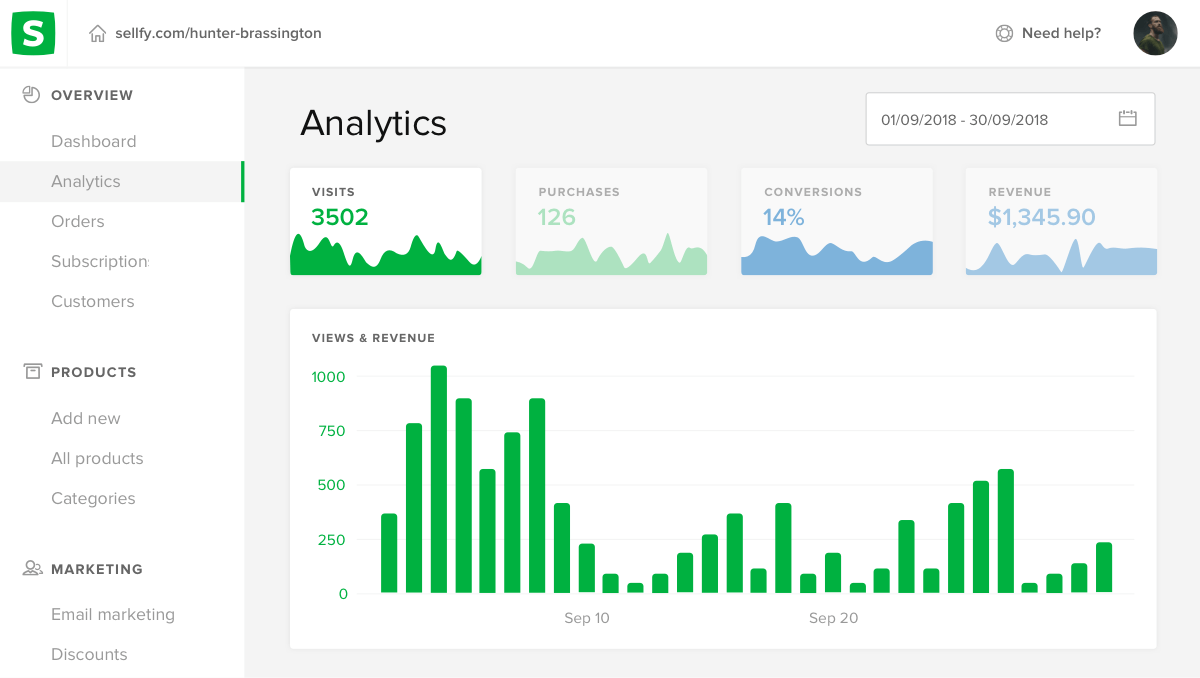
Expanding & scaling your online merch business
As your online merch business grows, consider strategies for expanding product lines, entering new markets, and increasing brand visibility.
Strategies for expanding product lines & entering new markets
Introduce new products that complement your existing offerings and appeal to your target audience. Conduct market research to identify opportunities and test new products. Expanding into new geographic markets can also drive growth. Consider localization and regional marketing strategies to succeed in different markets.
Collaborations & partnerships to increase brand visibility
Collaborate with other brands, creators, or influencers to reach new audiences and enhance your brand visibility. Joint ventures, co-branded products, and cross-promotions can create buzz and attract new customers.
Introducing limited edition items
Create limited edition items to generate excitement and urgency among your customers. Limited edition products can drive sales, increase brand loyalty, and create a sense of exclusivity. Promote these items through your marketing channels to maximize their impact.
Avoiding common pitfalls in online merch selling
Launching and running an online merch store comes with its challenges. Being aware of common pitfalls can help you avoid them and ensure a smoother operation.
Common challenges online merch sellers face & how to avoid them
Common challenges include inventory management issues, poor website performance, and ineffective marketing. Avoid these by implementing robust systems, regularly testing your website, and staying updated on marketing trends. Plan for potential problems and have contingency strategies in place.
Legal considerations & intellectual property rights
Ensure you comply with legal requirements, such as tax regulations and consumer protection laws. Protect your intellectual property by trademarking your brand and products. Be aware of copyright and trademark laws to avoid infringing on others’ rights.
Post-purchase engagement strategies
Engaging with customers after they make a purchase is essential for building loyalty and encouraging repeat business. Implement strategies for follow-up communication, loyalty programs, and gathering feedback.
Keeping customers engaged
Stay in touch with your customers through follow-up emails, newsletters, and social media. Offer loyalty programs, exclusive discounts, and early access to new products to keep them engaged. Personalize your communication to make customers feel valued.
Leveraging customer feedback
Collect customer feedback to understand their needs and preferences. Use this information to refine your products, improve your customer service, and enhance the overall shopping experience. Encourage reviews and testimonials to build social proof and attract new customers.
Conclusion
Successfully selling merch online involves several key steps, from defining your brand and choosing the right platform to setting up your store, creating high-quality listings, and implementing effective marketing strategies. Platforms like Sellfy simplify the process, enabling you to focus on growing your business. Stay adaptable and innovative in this dynamic online marketplace, continuously refining your approach based on data and feedback. By following these steps, you can build a successful online merch business that reaches customers around the world.




